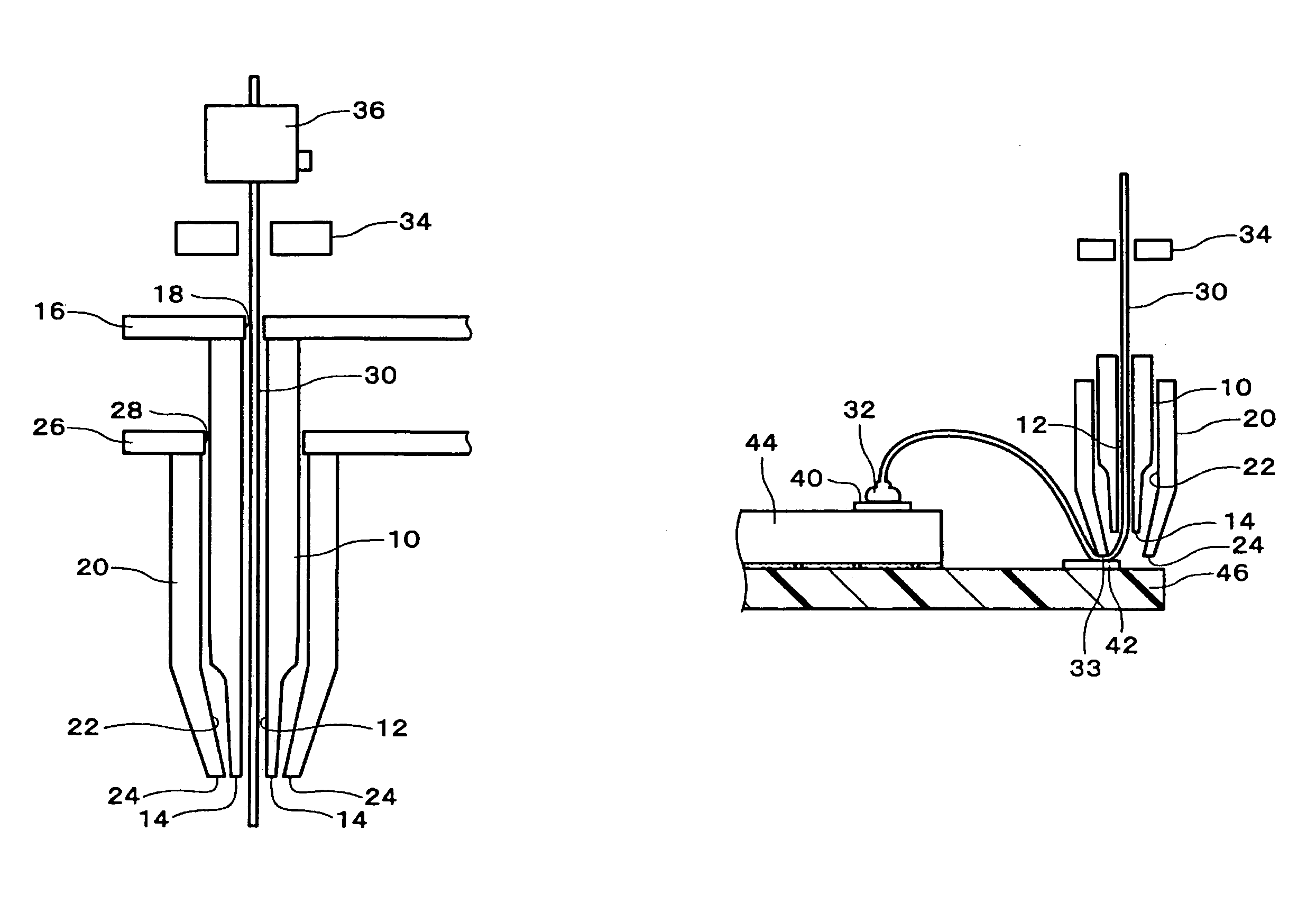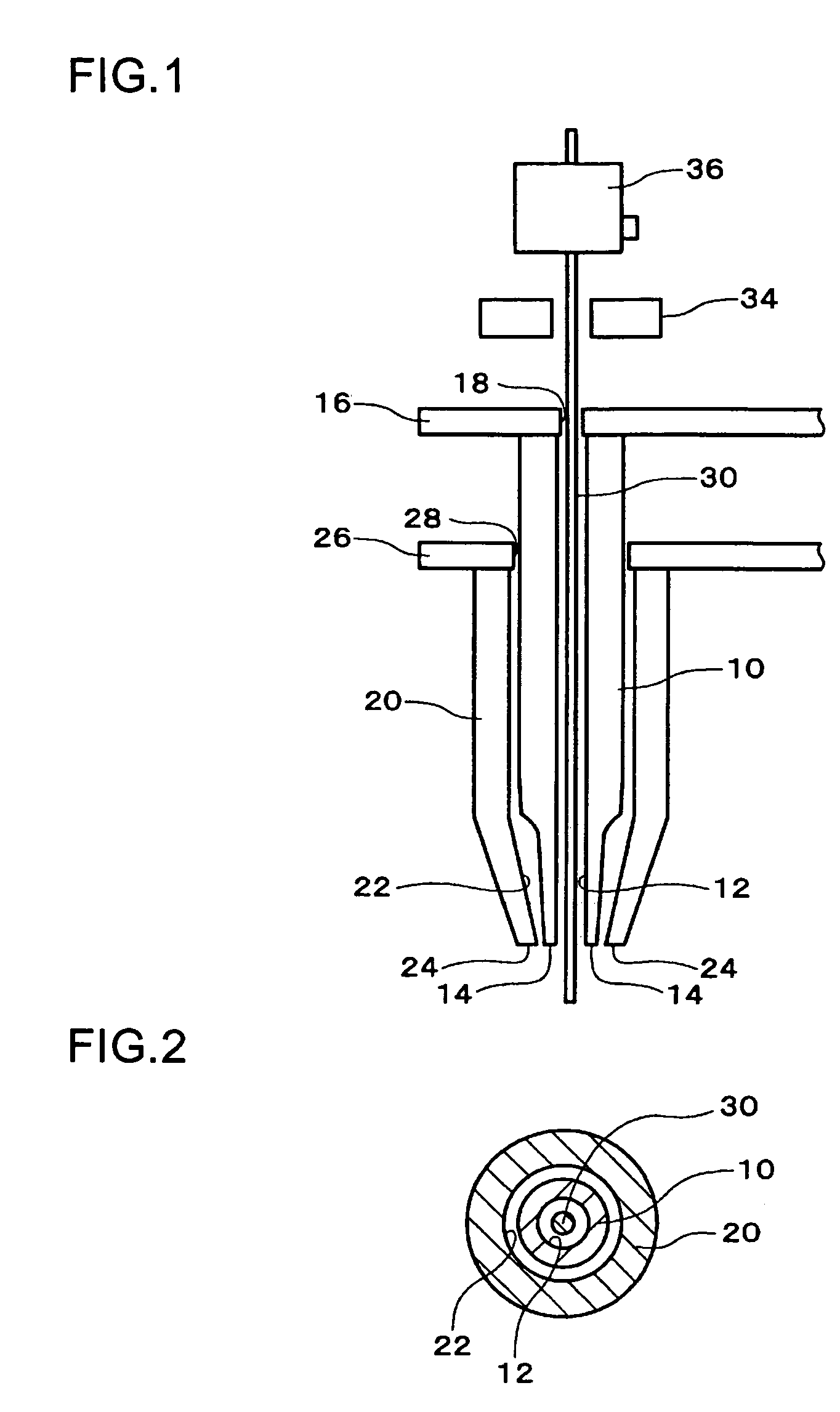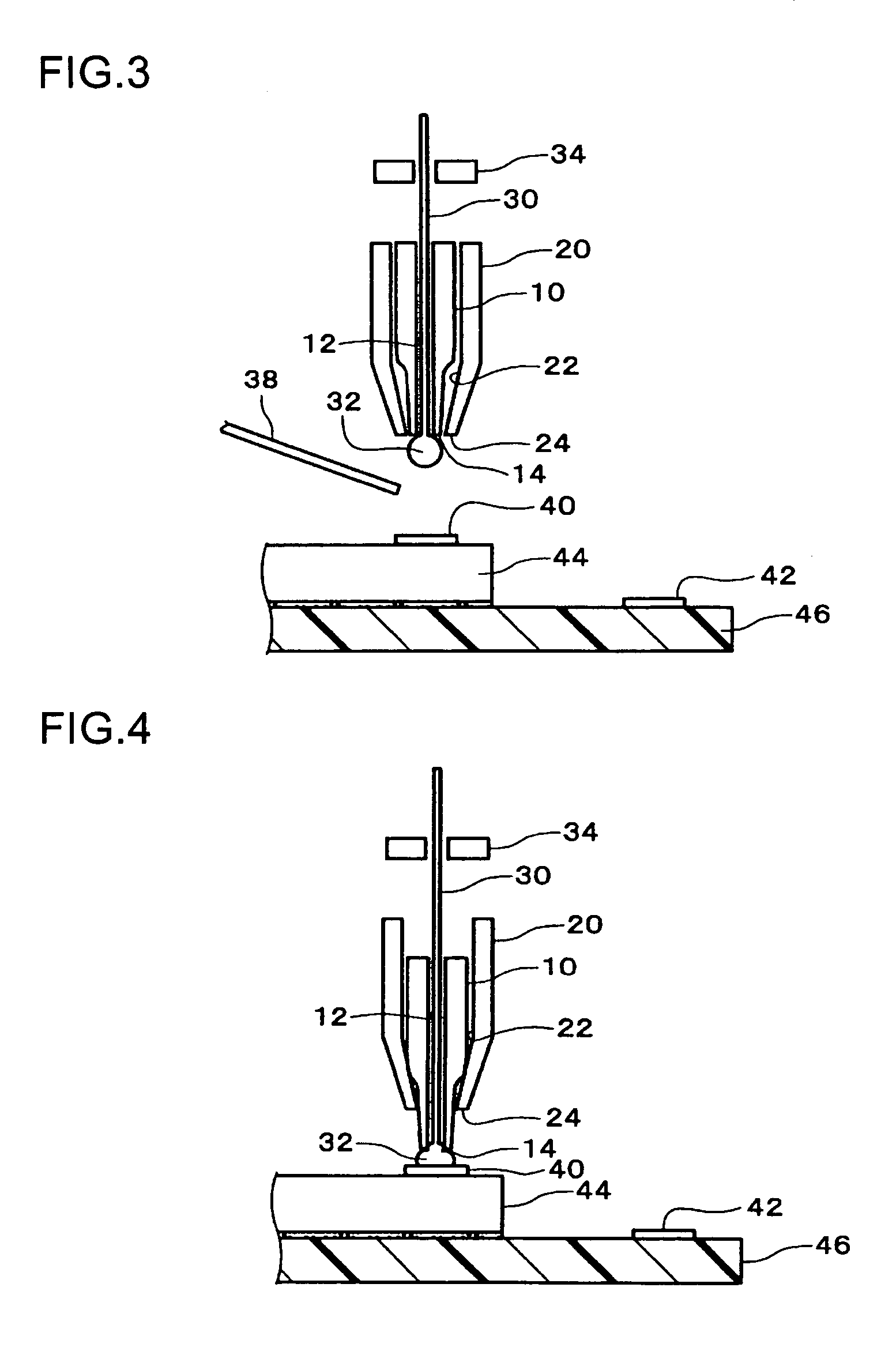Wire bonding method and wire bonding apparatus
a wire bonding and wire bonding technology, applied in the direction of soldering apparatus, manufacturing tools,auxillary welding devices, etc., can solve the problems of insufficient bonding and bonding failure of wires, and achieve the effect of eliminating bonding failures and eliminating bonding failures
- Summary
- Abstract
- Description
- Claims
- Application Information
AI Technical Summary
Benefits of technology
Problems solved by technology
Method used
Image
Examples
Embodiment Construction
[0032]Hereafter, an embodiment of the present invention will be described with reference to the drawings. FIG. 1 and FIG. 2 are diagrams for describing a wire bonding apparatus in accordance with an embodiment of the present invention. When manufacturing a semiconductor device, the wire bonding apparatus functions as an apparatus that manufactures the semiconductor device. The wire bonding apparatus is used for conducting a ball bonding (or nail head bonding) process.
[0033]The wire bonding apparatus includes first and second tools (for example, first and second capillaries) 10 and 20. For example, the wire bonding apparatus includes a work piece (for example, a semiconductor device) supply section, a transfer section and storage section, a bonding head section, and a table on which the bonding head section is mounted. The first and second tools 10 and 20 are attached to holders (supporting members 16 and 26) of the bonding head section, and can be moved in three dimensions by operat...
PUM
| Property | Measurement | Unit |
|---|---|---|
| width | aaaaa | aaaaa |
| area | aaaaa | aaaaa |
| height | aaaaa | aaaaa |
Abstract
Description
Claims
Application Information
 Login to View More
Login to View More - R&D
- Intellectual Property
- Life Sciences
- Materials
- Tech Scout
- Unparalleled Data Quality
- Higher Quality Content
- 60% Fewer Hallucinations
Browse by: Latest US Patents, China's latest patents, Technical Efficacy Thesaurus, Application Domain, Technology Topic, Popular Technical Reports.
© 2025 PatSnap. All rights reserved.Legal|Privacy policy|Modern Slavery Act Transparency Statement|Sitemap|About US| Contact US: help@patsnap.com



